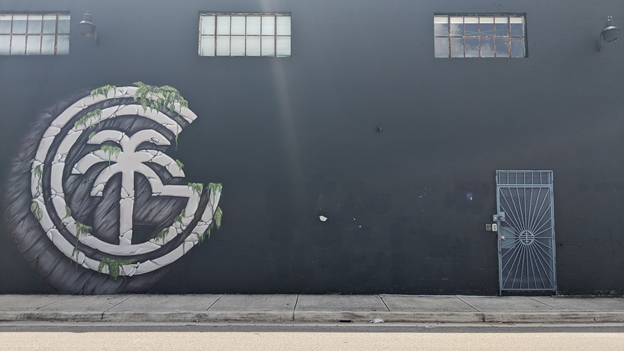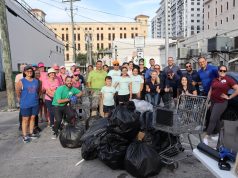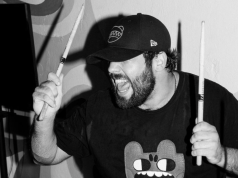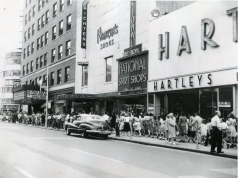Alex Vahan opened his art studio in Wynwood in 2011 and paid $1,450 for 1500 square feet space a month. Now, rent in Wynwood has skyrocketed and Vahan is long gone.
Vahan landed in Allapattah. Right now, he pays a third of the Wynwood price.
“Wynwood was not the right place for us to reside,” said Vahan, a graffiti artist turned creative director of Cushy Gigs Creative, a company that does murals, digital designs, illustrations and print work. “Allapattah is way more local …. and way more laid-back.”
Vahan tagged graffiti in Wynwood in the 1990s and early 2000s, when the neighborhood was full of abandoned warehouses and auto repair shops. It was there where he and other artists thrived. Now, Vahan finds Wynwood’s former vibe in Allapattah.
“[Wnywood] is not the creative atmosphere that it once was,” said Vahan, surrounded by cans of brightly colored spray paint and project printouts in his new studio, where he moved in 2017. “It’s obviously blown up a lot and it’s become like a commercial district.”
In the 1980s Coconut Grove was the art center of Miami. In 1987, Bakehouse Art Complex was founded on Northwest 32nd Street for artists being pushed out of Coconut Grove by rising prices. By the early 2000s, Wynwood had become the new art district.
Laura Novoa, who manages Bakehouse’s studios, worries Coconut Grove’s gentrification may repeat in Wynwood.
“Unless we change our models or unless we change the system, it’s inevitable,” Novoa said.
According to the Wynwood Business Improvement District, Wynwood now has nearly 6 million annual visitors and almost 200 murals.
“It’s supposed to be a spinoff from the design district for artists that couldn’t afford the design district,” said muralist Addonis Parker, who painted in Wynwood between 2001 and 2003. “Now, you can’t afford Wynwood.”
Novoa and Parker said local artists suffer the most from gentrification.
“These are artists that deserve a shot,” Parker said. “They just can’t afford it.”
Both Novoa and Parker said new murals are often created by artists from out of state, even from out of the country, crowding out locals.
Wynwood originally had some qualities that made it attractive to these local artists.
“The nice thing about Wynwood before it got expensive is that it’s kind of central,” said Novoa. Many artists are moving to Little Haiti or Overtown to stay close, she said.
Vahan said they are also places where people actually care about art and the artists.
“The lower-income neighborhoods are typically where we thrived because the people appreciated it,” said Vahan. “They get it, they understand it, they want to support it…so, we still go back to a lot of those neighborhoods.”

But Vahan fears that these areas may be next for upscaling.
“I doubt that would be that drastic, but especially in neighborhoods like Liberty City and Overtown…anything’s possible,” Vahan said. “It’s definitely a concern, especially with the way that they’ve treated those neighborhoods in the past.”
Allapattah may already be turning into Miami’s newest trendy spot as gallery owners and artists leave Wynwood and as nightlife and art expand in the neighborhood.
“Not because the artists want it to, but it kind of leads to gentrification,” said Novoa. “That’s a definite concern in Miami…it’s happening already.”
Novoa said that if Wynwood wants to help its local artists, the city needs to allocate resources for professional development or rental assistance.
In the meantime, Wynwood’s future is uncertain. Parker predicted it will continue growing into a hub for restaurants and clubs.
Novoa believes Wynwood has already become more of an entertainment district.
Vahan said it’s the opposite of what most artists want, but it’s out of their hands.
“Sometimes we get put on projects, and we know in our hearts that we’re part of this grander scheme, but it’s out of our control,” he said. “They’re going to do it with or without us.”
































